The Daily Diary of a Wandering Restaurateur
The Road to Arcos
 Humming a few choruses of "On the Road Again," we packed up, said our goodbyes to the Carpenters and made a quick stop at
the Rei Des Praias spa for WiWi to pummel Margene one more time before we headed east. Then it was up to the motorway and
off to Spain.
Humming a few choruses of "On the Road Again," we packed up, said our goodbyes to the Carpenters and made a quick stop at
the Rei Des Praias spa for WiWi to pummel Margene one more time before we headed east. Then it was up to the motorway and
off to Spain.
The major Portugese motorways have an automated toll system, with overhead sensors that tap your account for varying
amounts as you pass under them. Of course, for this to happen you must have a transponder in your car -- required if your
car is registered in Portugal but apparently not if it is a Spanish rental car. Roy tells me there is no way the local
authorities can chase down tolls incurred by out-of-country cars so we essentially had free use of the road .. I hope!
The idea behind the rather extensive (and expensive) automated system was to raise more money and reduce expenses.
Apparently they are finding out that traffic on the roads dropped by over 50% when the tolls were implemented and the new
system costs more to operate than it brings in ... so instead of making money it is costing even more money than when the
roads were free! I wonder who got the big kickback checks to put the system in place ...
So it was about an hour to the Spanish border and an immediate stop for gas since I had purposely avoided buying any
more gas than necessary in Portugal. That's because gas is 30 cents a liter or more (about US$1.50 a gallon!) cheaper in
Spain than in Portugal. I gather this little station just across the border does a brisk business! The run from Lagoa to
Arcos de la Frontera took about four hours, mostly all at freeway speed. The only congestion was around the edge of Seville
but otherwise it was free-flowing divided highways all the way ... that is, until we came into Arcos itself.
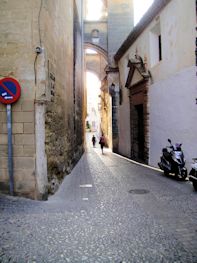
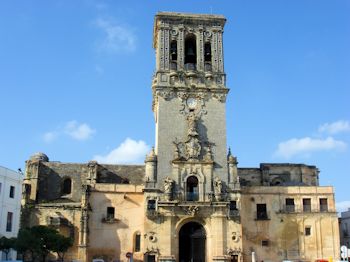
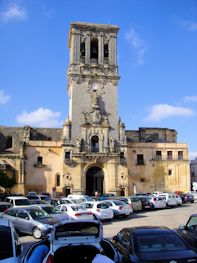
Arcos sprawls across the top of a long narrow hilltop. We entered through the new town and threaded our way through the
narrow streets up to the old town where, with luck, we would find both our hotel and a place to park! Fortunately we found
both, but not without some guidance.
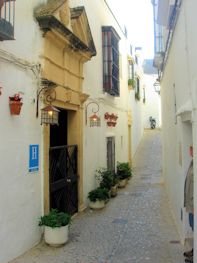
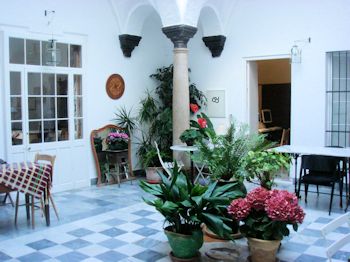
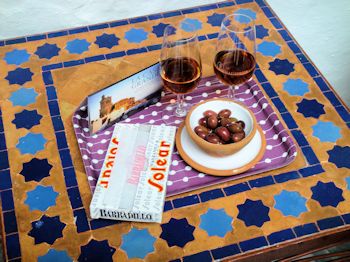
We had about a five-minute walk through the back alleys to La Casa Grande, eight rooms in an ancient stone building perched on the edge of the cliff. When we
finally tumbled in the door -- actually we had to ring and be admitted via a steel gate, into a small stone courtyard and
through a massive oak door -- we were shown to a seat in the sunlit atrium patio and offered sherry and olives while they
processed our check-in. Very civilized ... and an interesting case study about how to segue people between their travel
experience and their arrival experience.
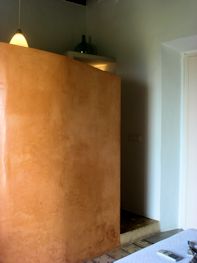
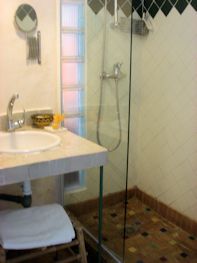
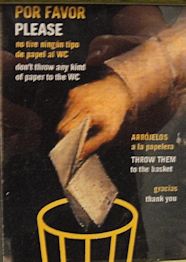
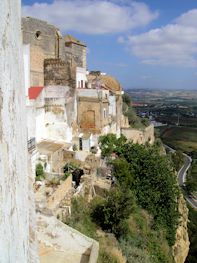
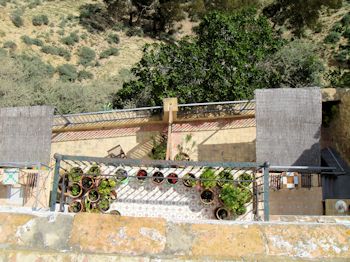
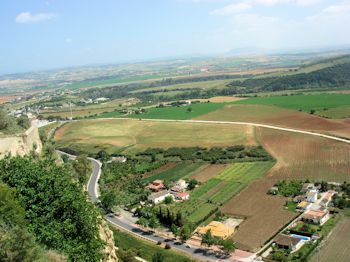
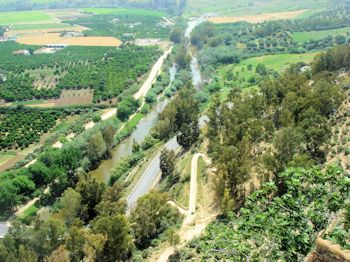
Our room is ... well ... a little different than we have seen before. High beamed ceilings and tiled floors are not new,
of course, but the bath facilities have been built into the room rather than added on to the room. Behind a curved wall
they managed to tuck a large shower, a small sink and a tiny toilet stall -- efficient but lacking a bit of privacy ... and
an unpleasant but necessary restriction often found in tempermental septic systems. But you can't fault the view (unless
you have issues with vertigo!)
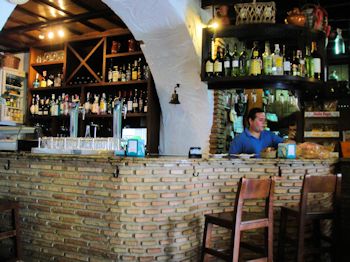
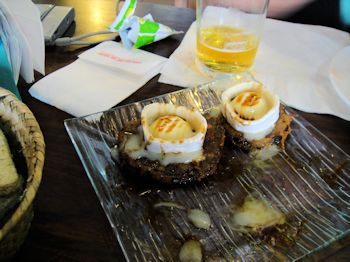
We settled in and headed out to explore the town and get a bite to eat, thrilled to be back in
the land of tapas. Both the hotel and Rick Steves recommended Bar La Carcel ("the jail house") for tapas and it proved to
be a good choice. Margene is rightfully addicted to the Iberian ham and discovered two new favorites: fried eggplant with
melted goat cheese and honey and a lovely simple fried shrimp cake. A few bites, a pint of lager and we were happy campers.
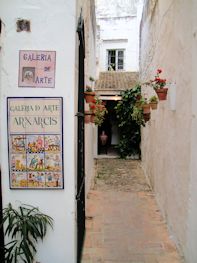
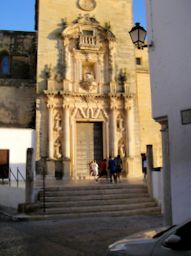
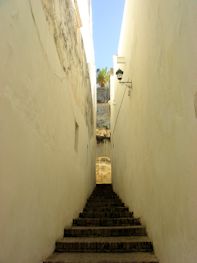
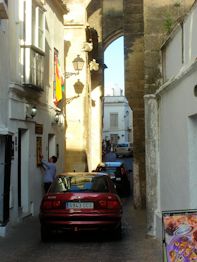
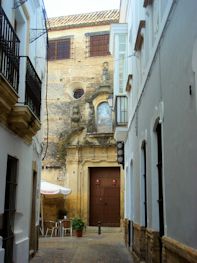
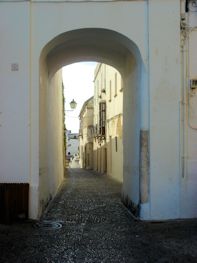
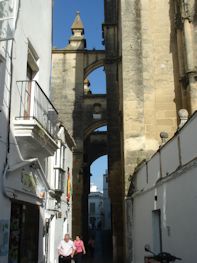
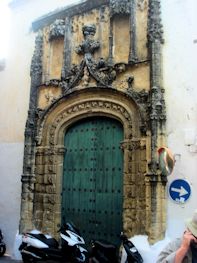
In the end, Arcos doesn't have much to offer except itself ... but it reminded us of some hill
towns in Italy where everywhere you turned was another postcard shot. I won't try to explain what we saw (since I have no
idea), but the town can speak for itself. We particularly liked discovering the soccer game on the small plaza in front of
one of the many churches.
 [Itinerary Page]
[Itinerary Page]
© 2012 Restaurant Doctor
 Humming a few choruses of "On the Road Again," we packed up, said our goodbyes to the Carpenters and made a quick stop at
the Rei Des Praias spa for WiWi to pummel Margene one more time before we headed east. Then it was up to the motorway and
off to Spain.
Humming a few choruses of "On the Road Again," we packed up, said our goodbyes to the Carpenters and made a quick stop at
the Rei Des Praias spa for WiWi to pummel Margene one more time before we headed east. Then it was up to the motorway and
off to Spain.





















